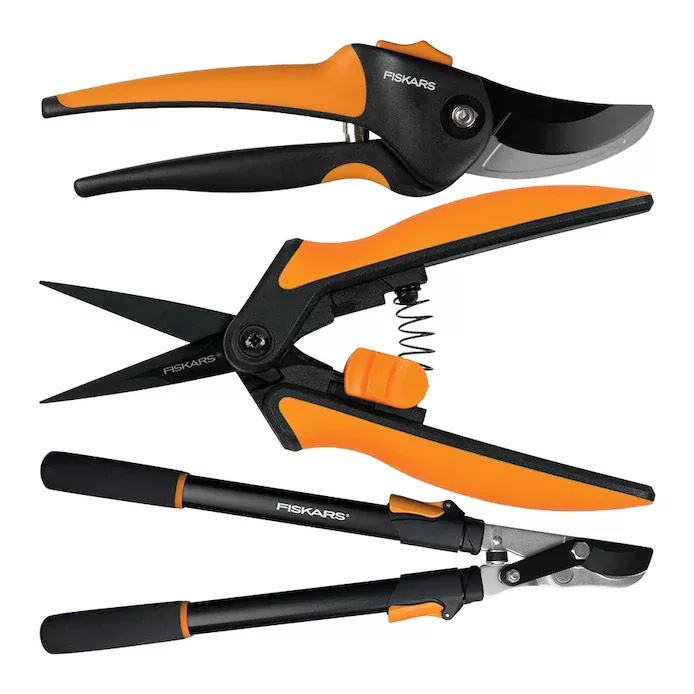This month, the floor is shared by Executive Director Fred Breglia and Garden Manager Erin Breglia.

Like a skilled mechanic or carpenter, every gardener and arborist needs specific tools to do specific jobs. From digging and planting to weeding and pruning, certain tools are better for accomplishing projects correctly the first – and every – time. No two gardeners use the same tools to accomplish the same tasks, but the bottom line is: quality matters. Gardening is a lifetime activity: buy the very best you can afford.
When supplying your tool chest, it is best to begin with basic pieces. Necessary for garden work are a good shovel, rake, trowel, weeder, and scissors. For working on trees and shrubs, a pair of pruners, hand saw, a pair of loppers, and a pole pruner are essential.
The shovel can be used to complete several tasks such as making holes for new plantings or digging up existing plants for division or transplanting. It will also be effective when removing large rocks under the topsoil.
A good garden rake is flexible and adjustable enough to fit into tight spaces around plants. This allows use in a garden bed without pulling up plants, unlike stronger but less flexible metal rakes, which are best for leaf raking on lawns.
Trowels come in many sizes, so it is a personal preference when deciding on handle size and shape, as well as head length. A longer narrower trowel is best for planting annuals, while a longer wider one is great for planting bulbs. For general use in the garden, go with a strong dependable tool with a lifetime guarantee.
Weeders can range from short hand-held tools to long-handled versions: choose the one that works the best for you. Erin’s personal preference is a True Temper Best Hand Weeder. This tool is excellent when removing dandelions, Queen Anne’s Lace, and thistle. It is also a great choice when removing weeds whose leaves grow in a small rosette shape.
What would a gardener do without scissors? Make bad cuts! While it is true that several cutting back tasks can be done with pruners, scissors are best for use on daffodil, daylily, and iris leaves. Even when leaves are shutting down, nutrients are still traveling to the plant’s roots, so it is important to cut the leaves cleanly with a sharp blade. Otherwise the leaves become mangled and uneven, causing stress to the plant. Excellent scissors are a classic kitchen pair, which stay sharp and have a large blade for fast cutting.

When choosing a pair of pruners, select a quality pair that cut with a bypass action (similar to scissors), rather than an anvil style that cuts by crushing material against a flat bottom blade. Bypass action pruners make cleaner cuts, stay sharp, and last a lifetime. Fred’s favorite is Felco brand model 11, which is similar to the original Felco 2 but with a slimmer blade. Left- and right-hand models are available.
When branches get too large to be easily cut with pruners, it is time to progress to the next tool. Loppers are pruners with extended handles, enabling higher branches to be reached as well as larger branches to be cut.

If branches become too large for a pruner or lopper, a handsaw is warranted. Modern pruning saws all utilize a razor-toothed design, making short work of larger branches. There are saws that fold or have fixed blades. Fred’s favorite is the Silky Super Accel 210 mm. It is delicate enough to do detail work on small branches yet strong enough to make quick cuts on branches up to 4 inches.
For branches too high to reach, a pole pruner or pole saw is required. The pole extends to reach branches from 14 – 21 feet up. Fred’s favorite is the Silky Hayauchi. This model cuts aggressively, extends to 21’, and has a pruning head that is great for high small branches.
Be aware that quality tools are not a substitute for proper training. Improper use can be harmful to both plants and people. For information on proper pruning techniques, consider attending the Pruning Workshop offered by Landis Arboretum in June. If gardening tips are needed, consider joining the Landis Arboretum Garden Club. Information about both the workshop and the club is available at landisarboretum.org.
